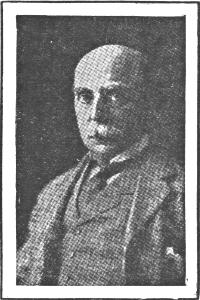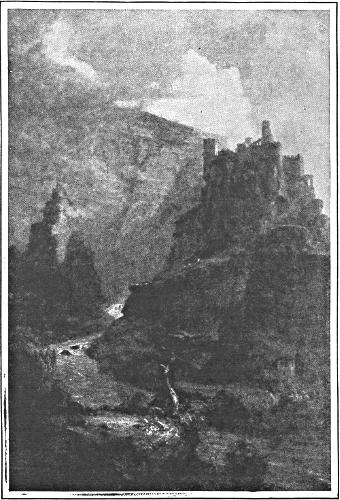The Mentor, No. 26,
American Landscape Painters
The Mentor
“A Wise and Faithful Guide and Friend”
Vol. 1 No. 26
AMERICAN LANDSCAPE PAINTERS
GEORGE INNESS
HOMER MARTIN
A. H. WYANT
THOMAS MORAN
D. W. TRYON
F. E. CHURCH

American Art Annual
By SAMUEL ISHAM
The beginnings of art in America were confined almost exclusivelyto portrait painting. In the earliest colonial times unskilledlimners came from the mother country and made grotesque effigiesof our statesmen and divines. As the settlements developedand the amenities of life increased better men came, and nativepainters were found, until about the end of the eighteenth centurya portrait school of surprising merit arose, founded on the contemporaryEnglish school, and developed men like Copley, Stuart, andSully. The other branches of painting, however,—history, allegory,genre, still life, landscape, and the rest,—were rarely attempted, andusually with unsatisfactory results.
Probably no artist devoted himself entirely to landscape until1820, when Thomas Doughty, who was already twenty-seven years old,gave up his leather trade and took to painting American views in delicategray and violet tones, with small encouragement from his contemporaries.
THOMAS COLE, THE IDEALIST

Metropolitan Museum of Art
THE VALLEY OF VAN CLUSE, BY THOMAS COLE
Soon after came Thomas Cole, the real founder of the school,who emigrated to America with his father’s family when he was nineteen.He was a sensitive, delicate youth, who suffered much in his wanderingswhile trying to support himself, at first by his trade of wood engraving,but most of all after the chance meeting with an itinerant portrait painterled him to take up art.It was not until he cameto New York in 1825 thathis merits were recognizedand his difficulties ceased.Some small canvases thathe exhibited were quicklybought, and from this timeuntil his death his popularitysteadily increased.The quality of Cole’s workowes much to his owncharacter, and perhapsalso to his early Englishbringing up. He was anidealist rather than a realist.He cared less to reproducethe beauties ofthe nature around himthan to awaken high,moral thoughts. It wasnot for the pleasure of theeye, but to suggest profitablemusings on thegrandeur and decline ofnations, the transitorinessof life, the rewards ofvirtue after death, that hepainted the “Course ofEmpire,” the “Voyage ofLife,” and the rest. Hewas the founder of a romanticschool, which may be traced even down to the present day.The succeeding artists did not indeed paint allegories; but they put themain interest of their pictures in the strangeness or beauty of their subject,rather than in rendering ordinary scenes with personal feeling.